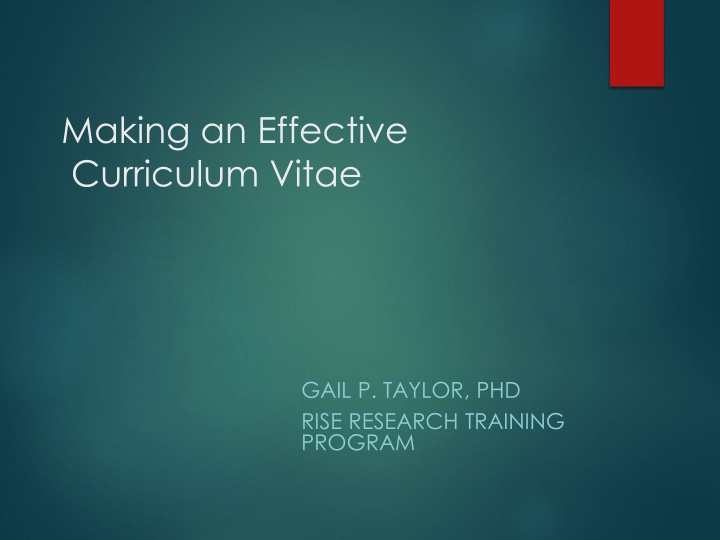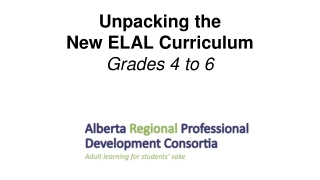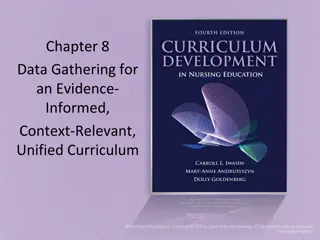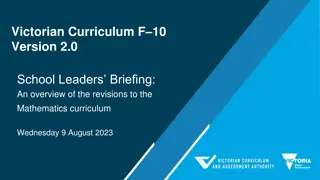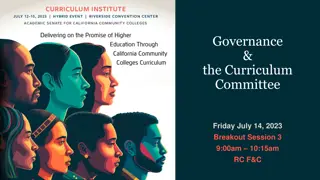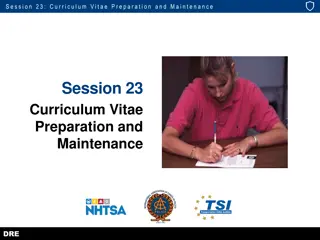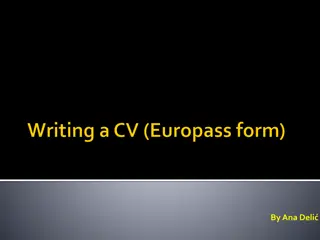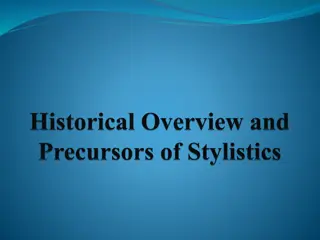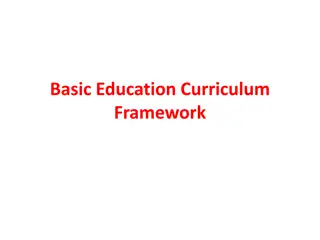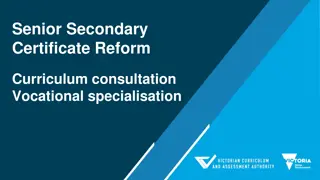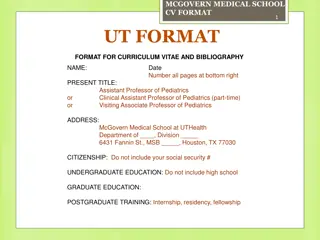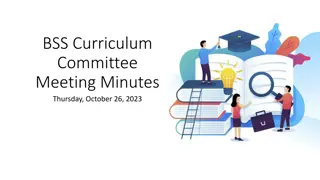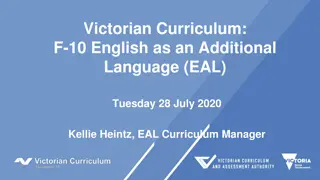Crafting an Effective Curriculum Vitae
A Curriculum Vitae (CV) is a vital document that showcases your educational background, work experience, achievements, and scholarly contributions. Learn the key elements to include such as education, research interests, job experience, and more. Discover the importance of a CV for job applications, awards, publications, and career advancement opportunities.
Download Presentation

Please find below an Image/Link to download the presentation.
The content on the website is provided AS IS for your information and personal use only. It may not be sold, licensed, or shared on other websites without obtaining consent from the author.If you encounter any issues during the download, it is possible that the publisher has removed the file from their server.
You are allowed to download the files provided on this website for personal or commercial use, subject to the condition that they are used lawfully. All files are the property of their respective owners.
The content on the website is provided AS IS for your information and personal use only. It may not be sold, licensed, or shared on other websites without obtaining consent from the author.
E N D
Presentation Transcript
Making an Effective Curriculum Vitae GAIL P. TAYLOR, PHD RISE RESEARCH TRAINING PROGRAM
What is a CV? the course of my life A presentation of your: Education Experience Accomplishments Scholarly Pedigree Its appearance also tells about your: Attention to detail Thoroughness
Why do I need a CV? New job positions Awards, fellowships Grant proposals Publishing, introductions for presentations Consulting Tenure or advancement in University Usually accompanied by Statement of Purpose Or Cover and small research proposal
CV v. Rsum CV R sum Snapshot Tailored information Education Relevant skills set Information generally incomplete Used when applying for Specific job Public or private sector 1 to 2 pages Overall summary: Education Experience Pubs, Presentations Teaching, Grants Used for applying for: Grants Fellowships Academic Teaching Academic Administration Dozens of pages, eventually
Key Elements Name, address, telephone number, & e-mail Education Recent or expected degree at top List degrees, majors, institutions, and dates of completion (or expected date) in reverse chronological order. Positions Held Location, Position, dates Dissertations or theses, including the date it was (will be) finished. Provide titles
Key Elements Progress (if you are a Ph.D. student) Completed coursework, June 2000 Passed qualifying exam, March 2000 Research Interests Research Experience: Brief description, conclusions, advisors, committees Postdoctoral Graduate Undergraduate Honors and Awards (e.g., National Science Foundation Fellowship, IBM Dissertation Fellowship)
Key Elements Experience: Include your job title Name of the employer or institution Dates Your responsibilities Your accomplishments Use active verbs to highlight: Delivered eight class lectures on composite materials Developed five supporting problem sets and a midterm examination
Key Elements Patents Publications Put these last if more than four or five entries. Classify by type Refereed Papers Abstracts List items in standard bibliographic form Beware of "in preparation Current and past grants Poster and Oral Presentations List title, meeting/school, city, state, dates
Key Elements Other possible categories: Academic (department, College, University) Service Teaching Competencies Students Mentored Community Service Professional Associations Foreign Study Patents Licensure TIP: Look at CVs of employees/faculty of where you re applying
Focusing a CV For Research: Sample Research CV For Teaching Sample Teaching CV Difference? Order of information
Additional Elements for Students Show what you ve done Conferences Jobs that show you ve handled responsibility
Appearance Visually appealing and easy to read Don t overdo bold/italics, etc. Use white space Use consistent formatting 1 margins
Questions to Ask Yourself Appropriate use of bold and italic text? Are categories clearly labeled? Is it easy to find sections of interest for admissions committee members? Has your advisor and at least one other person reviewed and critiqued it? Avoided using acronyms? Proofread to eliminate typographical errors?
What NOT to do: Don't include: Birthday SS# Ethnic identity Political affiliation Religious preference Hobbies Marital status Sexual orientation Place of birth Photographs Physical: Height; Weight; and Health.
Useful websites The Chronicle of Higher Education: The Basics of Science CVs From CV to R sum UC Berkeley CV Parts I & II Pepperdine University Writing the Academic CV Purdue University Online Writing Lab
